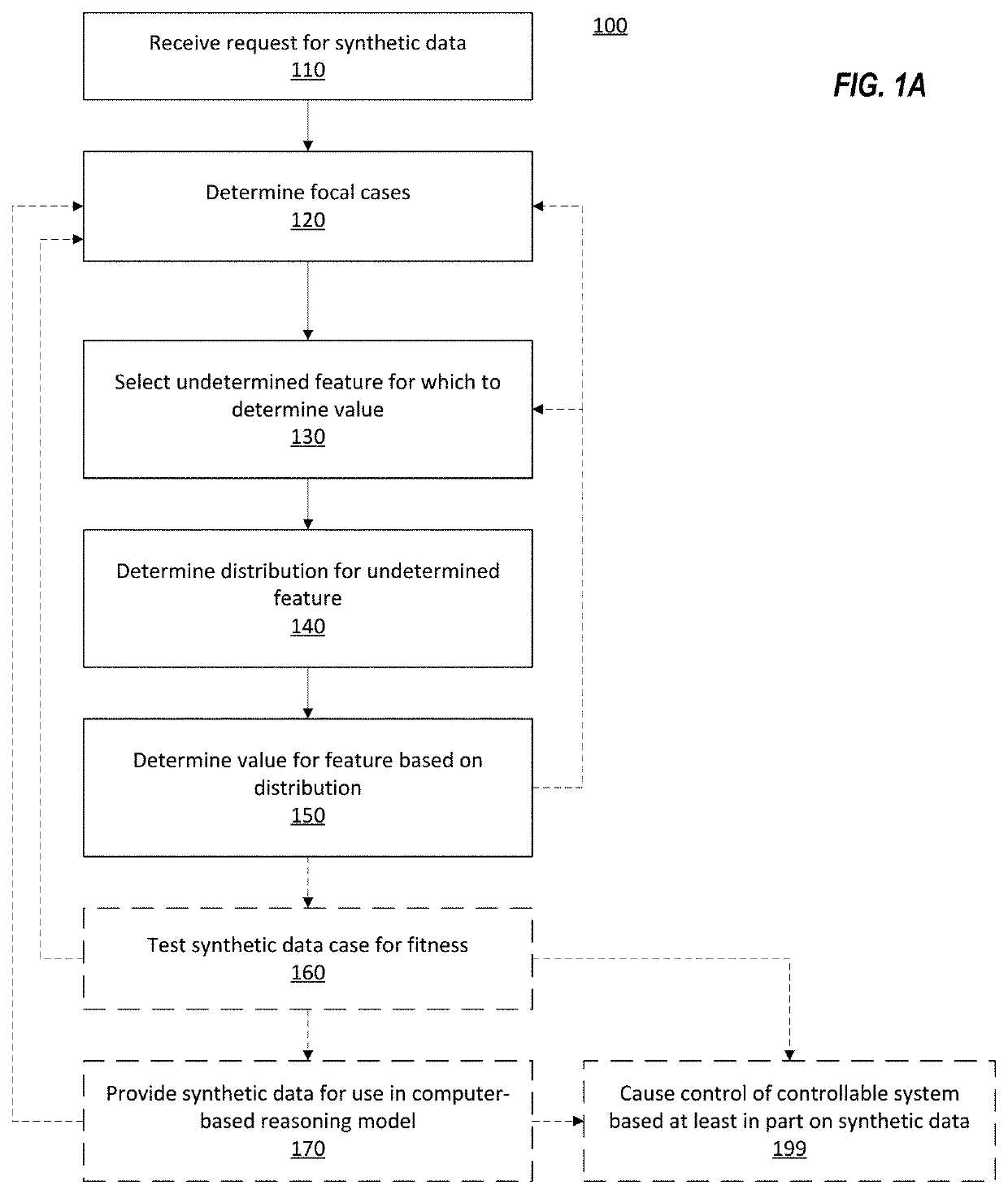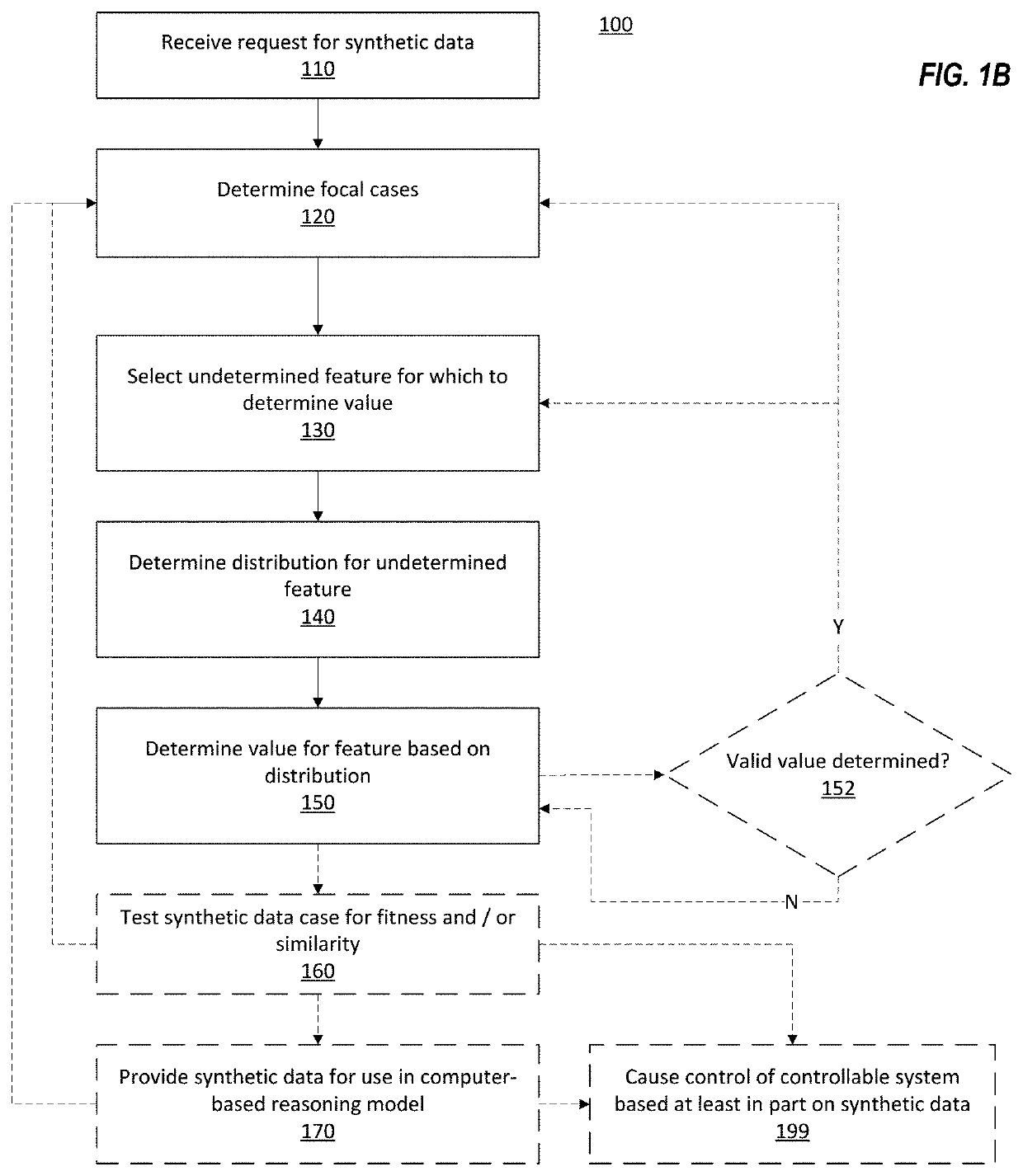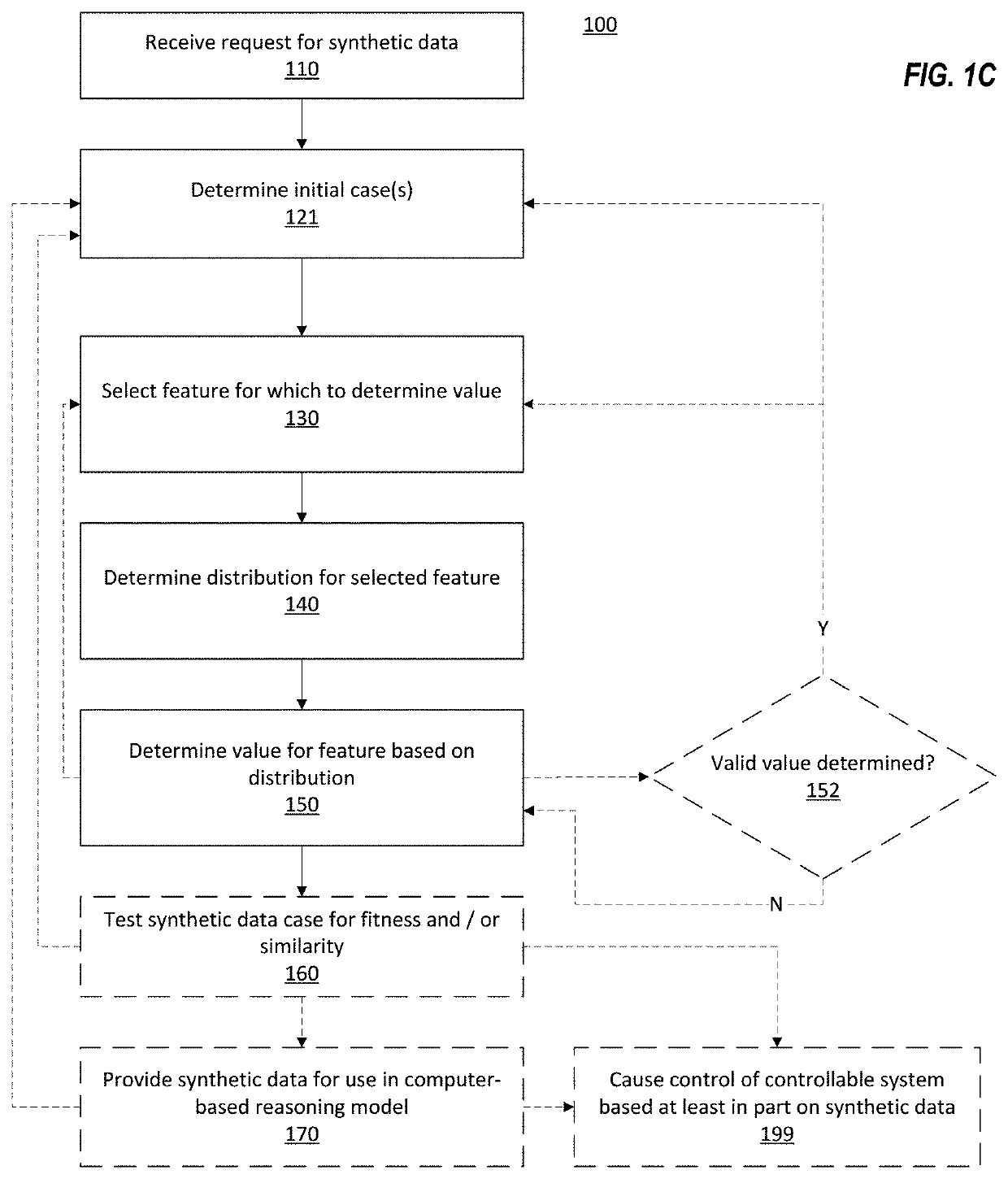Synthetic Data Generation Using Anonymity Preservation in Computer-Based Reasoning Systems
a computer-based reasoning and synthetic data technology, applied in the field of synthetic data generation in computer-based reasoning systems, can solve problems such as the inability to anonymize or anonymize data in a way that satisfies user expectations, and the inability to acquire training data
- Summary
- Abstract
- Description
- Claims
- Application Information
AI Technical Summary
Benefits of technology
Problems solved by technology
Method used
Image
Examples
example time series embodiments
[0095]Data cases are discussed extensively elsewhere herein. Further to those discussions, and as discussed herein, in some embodiments, data cases may include features related to time series information for the features. For example, a data case at time “t” may include N features. In some embodiments, in addition to those N features from time t0, one or more time series features may also be included, such as values from t(−1), t(−2), etc. The time series features may be previous value(s) for feature(s), difference(s) between the current value(s) and previous value(s), interpolated value(s) of previous value(s) for a fixed lag, differences between the current and previous value(s) divided by the timestep or time delta to the previous value(s) (akin to a “velocity”), and / or higher derivatives such as dividing by time twice or taking the change in velocity (acceleration). Further, in some embodiments, time (e.g., as a value that indicates when the data case was collected or as a value...
PUM
 Login to View More
Login to View More Abstract
Description
Claims
Application Information
 Login to View More
Login to View More - R&D Engineer
- R&D Manager
- IP Professional
- Industry Leading Data Capabilities
- Powerful AI technology
- Patent DNA Extraction
Browse by: Latest US Patents, China's latest patents, Technical Efficacy Thesaurus, Application Domain, Technology Topic, Popular Technical Reports.
© 2024 PatSnap. All rights reserved.Legal|Privacy policy|Modern Slavery Act Transparency Statement|Sitemap|About US| Contact US: help@patsnap.com










